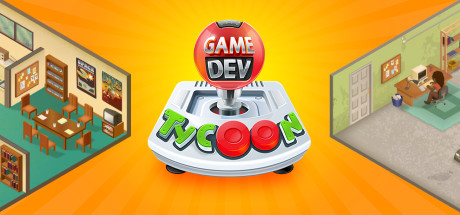Doctor Flow Reviews
Doctor Flow is a puzzle game of deduction and decision making. You assume the role of a doctor who decides which tests are performed on patients and in what order. Keep in mind cost efficiency, patient satisfaction and quality of healthcare. Choose wisely!
| App ID | 836700 |
| App Type | GAME |
| Developers | Grendel Games |
| Publishers | Grendel Games |
| Categories | Single-player, Steam Achievements, Steam Cloud, Steam Leaderboards, Stats |
| Genres | Casual, Simulation |
| Release Date | 27 Jun, 2018 |
| Platforms | Windows, Mac |
| Supported Languages | English, Dutch |

10 Total Reviews
7 Positive Reviews
3 Negative Reviews
Mixed Score
Doctor Flow has garnered a total of 10 reviews, with 7 positive reviews and 3 negative reviews, resulting in a ‘Mixed’ overall score.
Reviews Chart
Chart above illustrates the trend of feedback for Doctor Flow over time, showcasing the dynamic changes in player opinions as new updates and features have been introduced. This visual representation helps to understand the game's reception and how it has evolved.
Recent Steam Reviews
This section displays the 10 most recent Steam reviews for the game, showcasing a mix of player experiences and sentiments. Each review summary includes the total playtime along with the number of thumbs-up and thumbs-down reactions, clearly indicating the community's feedback
Playtime:
467 minutes
jojo gege
👍 : 4 |
😃 : 0
Positive
Playtime:
58 minutes
Cute little brain wrecker! Does what it says on the box.
👍 : 0 |
😃 : 0
Positive
Playtime:
35 minutes
Considering that this game started off as a training-tool, it's both surprisingly difficult and a lot of fun!
+ the layout is simple, but attractive
+ the gameplay is easy to pick up, but difficult to master
+ the game teaches you how to solve problems by using conditionals (even if you're not a programmer)
- there is no option to toggle languages from the menu (you appear to be stuck with your system's language)
- there is no clear way to analyse your actions and their results other than to restart/retry (a "rewind"-function would REALLY help!)
- there is no real sense of urgency (no timer, your "patients" are effectively immortal until you actually start the clinical trials)
I would, all in all, definitely recommend the game if you enjoy logic-puzzles.
👍 : 0 |
😃 : 0
Positive
Playtime:
270 minutes
[u] This review was aken from LvLRaid.com [/u]
Doctor Flow is a drag-and-drop puzzle game where the player acts as a medical specialist who must correctly diagnose patients at the lowest cost to obtain a maximum score. Despite small glitches in the splash screen, the minimalist design and mobile game-like controls work in the favor of Doctor Flow, pairing well with its complex puzzles.
In the settings menu you can find various theme options to add a dimension of color and texture to the game’s bare visual interface. This is a simple (but much needed) touch to the design, as there are no landscape/environment changes for the duration of the game.
The gameplay consists of choosing nodes and constructing paths that will lead patients to the correct end diagnosis. There are 41 levels (or scenarios), with a possibility of earning two hearts which is considered a perfect score.
At a certain point in the game, you will reach a level that has a seemingly simple and straightforward solution, with only one node and two possible diagnoses. When running the supposed correct configuration for this level, the player will be met with a curious incongruity. It seems the patients funneling through the node are travelling through the opposite path to the one the player has assigned. At first glance, this could be interpreted as a bug/glitch in the game, but is actually Doctor Flow’s way of introducing the concept of node inaccuracy.
Similar to the idea of a diagnosis not always being 100% correct, some nodes are subject to the same fate (those nodes being the outlined ones). The problem with this is that the requirement for a two-heart score is entirely dependant on correctly diagnosing a chosen number of patients below a specific price point. When there are certain nodes that are inaccurate in a way in which one cannot guarantee a 100% success rate with any configuration, it requires the player to test these nodes prior to attempting to run a full scale completion of the level. But what are the parameters of this requirement level to level?
There is no possible strategy for learning the activity of a given node without failing or restarting multiple times to understand the patterns of a single level. This brings to light the missing feature of a pause/freeze function while testing the diagnosis tree in order to view what is happening with each illness in respect to the nodes they travel through (the one currently in place removes the patients’ attributes from view). This is essential to analyzing a node’s accuracy and making decisions accordingly. When one does ultimately strike upon the “correct” solution allowing for the most patients diagnosed, the player still must account for the cost disparity and if it has met the unknown criteria for that level.
While this lack of clarification and instruction may be frustrating for some, it can be argued that as this is a puzzle game the developers are under no obligation to explain these rules to the player; and it may be best that they didn’t to add to the challenge. Nevertheless, there is a clear line between a game that is frustrating because it requires thought and strategy, and a game that is frustrating because there is no rhyme or reason to the solution.
[b]TL;DR[/b] - Initially a compelling and novel addition to the puzzle genre, Doctor Flow quickly spirals into a cycle of testing and restarting, which transforms this game from a mental exercise to a migraine. As accuracy is a seemingly crucial part of Doctor Flow, the lack of communication and consistency regarding requirements for each level is destructive to the strategic elements this game is meant to represent.
👍 : 2 |
😃 : 0
Negative
Playtime:
9 minutes
Honestly, the game describes itself as being a doctor doing tests on patients, but all you're doing is sorting squares and triangles and circles there's no i'm a doctor story at all except for the name of the game and the intro vid. If the game had some story to it (patient comes in with chest pain and this and that sympton) and it would actually do symptons it would be fun, but just sorting squares and triangles with no reason is rather boring ;(
👍 : 0 |
😃 : 0
Negative
Playtime:
125 minutes
So this game is about constructing a decision tree to classifie categories, using given nodes that have specific costs (and accuracy).
Okay, the idea is novel (the only other game with similar mechanics I can think of is while True: Learn(), but it's very different), gameplay is clean too, but it soon becomes pure guesswork towards the middle of the game, where node accuracy is introduced:
1. Node accuracy label can be at either side of the node output, and their actual meaning is: the output labeled with "n%" will only produce the correct result n% of the time. This is not mentioned anywhere in the game and it took me some experimentation to figure out
2. The test method at this point is, frankly, baffling: [b]100% accuracy required for ~15-20 samples[/b], even when the decision tree is indeterministic? This is asking for guess the random seed and how many stacked nodes are needed:
- acquiring 100% accuracy with a non-perfect node is impossible, so the requirement is ill-formed
- without knowing what the required accuracy actually is, there is no way to determine the required amount of stacked nodes
- the proportion of the categories in the input is [b]simply non-existent[/b] (in the game they're always equal in proportion). This is, again, a very important information when optimizing decision trees
- with a small amount of samples, the variance is simply too high and there is no way to guarantee the precision of the accuracy statistically
While True: Learn() takes a more reasonable approach: by giving a large sample set [b]and a required accuracy for each classification[/b]. Realistically speaking, when we diagnose patients (or do any binary classifications) there is always a target type I/II error rate, and you can't simply just say "get it 100% right". It's just plain impossible.
3. The cost requirement is simply too tight after the introduction of accuracy. It becomes an act of "guessing the intended solution".
In fact, it becomes even worse after build cost is introduced: as in every other programming game (e.g Human Resource Machine, Spacechem, ...), the metrics are almost always [b]trade-off with each other[/b]; you can't optimize all of them at once.
4. Satisfaction rating is even worse: [b]what[/b] is the exact definition of "satisfaction rate"? Things like "average/median time spent waiting" does, but a all-encompassing percentage is simply pointless. It's basically even more guesswork.
In fact, the full heart requirement for every single level in the late half basically boils down to "guess the correct configuration". For this, this is not a puzzle game anymore.
So... yeah. It starts out interesting, but I don't see myself 100% completing this in the near future. It's not fun for people who wants to aim for 100% all the time, because the metric used for judging the player is very poorly-designed.
👍 : 9 |
😃 : 0
Negative







